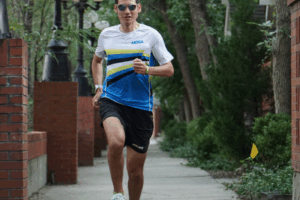Recovery
What are the warning signs of a new PE?
Shortness of breath, fainting, or chest pains (particularly pains that worsen with coughing or change in position) are the three most worrisome signs. Learn more about the signs and symptoms of a pulmonary embolism.
Categories:
What are the warning signs of a new DVT?
Swelling and pain. It often feels like a persistent "charley horse," or cramping in the calf. A sensation of fullness/pressure/swelling/tightness occurs, especially when going from sitting to standing. It is also described as an odd pulling sensation or tingling that doesn't go away. Learn more about the signs and symptoms of a blood clot.
Categories:
How does PE affect someone with asthma?
You want to make sure the asthma is well controlled. It can worsen after a PE. You should maximize your normal asthma regiment or take steroids that can help with the pain from pulmonary infarction.
Categories:
Being short of breath – what is normal and when should I seek urgent care?
If you feel very short of breath you should immediately see your doctor. However, after a PE, you may have lung infarction/scarring/tissue damage which can affect breathing for some time. Most pain should go away in a couple of days, but shortness of breath can last for weeks. If symptoms do not go away within a few weeks, or if they worsen, you should call your doctor.
Categories:
Is my leg swelling normal after having a blood clot?
It is common to have leftover swelling in the leg after the initial treatment of a blood clot in your leg (DVT). When you wear graduated compression stockings (pressure stockings that are tighter around your ankle and get looser as they move up your leg) daily, they help increase blood flow in the legs and reduce swelling. There is a complication of DVT called post-thrombotic syndrome (PTS) that has many of the same symptoms of a DVT and is due to damaged valves. This is more common in blood clots experienced in the upper part of the leg.
Categories:
Is a blood clot in the lung absorbed or does it dissolve?
Over time, the body will re-model the fibrin clot (an insoluble protein that is produced in response to bleeding and is the major component of the blood clot) termed “fibrinolysis” with retraction of the clot into the blood vessel wall, this happens for most blood clots. That is why it is uncommon to obtain a repeat CT scan of the lungs particularly since over 4-12 weeks the chest pain and shortness of breath usually resolves for most patients.
Categories:
How can I manage lung pain?
Some patients will be fine without pain medication or have adequate pain control with acetaminophen (i.e., Tylenol). If that is inadequate, a short course of anti-inflammatory medication may be prescribed but typically the non-steroidal anti-inflammatory drugs (NSAIDs i.e., Aspirin, Ibuprofen, Naprosyn) used for inflammation will increase the bleeding risk by affecting the platelets while on anticoagulant medication to prevent further clots. In cases like that, your provider may prescribe Celebrex which does not affect platelet function unlike the NSAIDs. It is also important to have a low threshold for calling the doctor since symptoms cause frequent anxiety.
Categories:
What types of over-the-counter pain reliever medications can I take? What is safe to take for pain?
You can take them in moderation, and there are many different options out there. This question is a good one to consult with your doctor on. Some medications pose higher risk than others and some can contribute to bleeding. Tylenol in low doses is okay but in high doses can make Coumadin more powerful. When on full dose anticoagulant you should only take anti-inflammatory Aspirin products like Ibuprofen or Naprosyn sparingly and only if you are not having any bleeding at that time like bruising or heavy menses. If you are ever on half dose anticoagulant, then these anti-inflammatory medications can be used more frequently.
Categories:
Will I need to get a follow up scan to check the status of the blood clot?
Usually, a follow up scan is done if symptoms do not improve between 3-6 months and/or when stopping the anticoagulant to have a new baseline.
Categories:
Should I use a heating pad or ice for clot related pain?
Heat, not ice, may help reduce the associated muscle spasm and relieve some of the inflammation. It is best to use wet heat instead of dry heat because wet heat penetrates deep tissue faster than dry heat to provide pain relief and reduce tissue damage.




